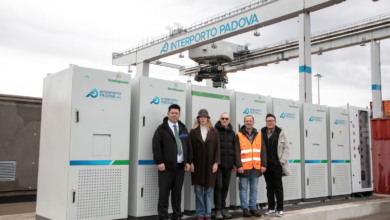Italy experiments artificial intelligence to improve building efficiency
The advanced data processing model of Artificial Intelligence has taken as a case study the Umbria Region
(Sustainabilityenvironment.com) – An Italian study has made it possible to exploit Artificial Intelligence to improve energy efficiency strategies for the national building stock in the medium and long term. The study was conducted by ENEA, Italian National Agency for New Technologies, Energy and Sustainable Economic Development.
An extremely interesting experiment that demonstrates the effectiveness of digital forecasting strategies applied to buildings. To put into practice targeted interventions that have greater effectiveness and less expenditure of resources and time.
To test the new AI technology, the team of experts, chose the case study of the Umbria Region: a local context, but perfectly representative of the Italian national context. Here 84% of the buildings were built before the 90s, have a surface area between 60 and 150 square meters and, for the most part, are equipped with autonomous gas-powered systems.
The task of the artificial neural network
The researchers of ENEA started from the estimate of the total energy consumption of the building stock of the Region, equal to about 870,000 tons of oil equivalent. Corresponding to an average consumption per house of 206 kWh/sqm. At this point artificial intelligence was developed. That is an artificial neural network composed of an advanced model of data processing. Capable of simulating the energy consumption of the building stock. The forecast has studied a time interval of 25 years applying six different efficiency strategies:
- replacement of existing windows with most efficient ones;
- replacement of existing boiler with condensing boiler;
- replacement of existing boiler with hydronic heat pump;
- deep renovation of building envelope (thermal coat installation and simultaneous windows replacement);
- deep renovation of building (thermal coat installation and simultaneous windows replacement) plus the replacement of existing boiler with condensing boiler;
- deep renovation of building (thermal coat installation and simultaneously windows replacement) plus the replacement of existing boiler with heat pump.
The results of the study
“In some contexts, such as the Umbrian one, the combined interventions on the envelope and plants, even if more expensive and therefore achievable on a limited number of buildings, allow more significant energy savings than those resulting from individual interventions, as the replacement of fixtures, even if replicated on many more buildings”, explains Iole Nardi, researcher of the ENEA Laboratory of Energy Efficiency in Buildings and urban development.
After the first results, ENEA experts have chosen to continue testing artificial intelligence systems by changing the objective. The energy forecasts elaborated had to identify which buildings to requalify in relation also to the climate in order to increase the total efficiency.
Read also ABB and Samsung together for smart buildings technology
Choosing to intervene on the most energy-intensive buildings in the Region, the result was an increase of up to 23% in energy savings. And an overall reduction in energy demand in the sector by 13%.
“These results confirm the enormous potential of artificial intelligence and, in particular, artificial neural networks as a sophisticated tool for data processing and forecasting energy analysis. Their ability to simulate the behavior of the human brain allows them to “learn” through experience. AI, in fact, is not programmed, but “trained” to perform increasingly complex tasks through a learning process based on empirical data, as the ones we used for this study in which information contained in the Energy Performance Certificates have also been elaborated“, underlines Domenico Palladino, researcher of the Energy Efficiency Laboratory in Buildings and Urban Development of ENEA.
Exploring new solutions to improve the quality of the national building stock is a priority objective. In Italy, unfortunately, 40% of total energy demand comes from buildings. In recent years, numerous strategies have been adopted to improve the efficiency of the building stock. Aimed at achieving an energy reduction of 25,5 Mtep by 2020, achieved only partially since between 2014 and 2019 was achieved a saving of 17.6 Mtep.






